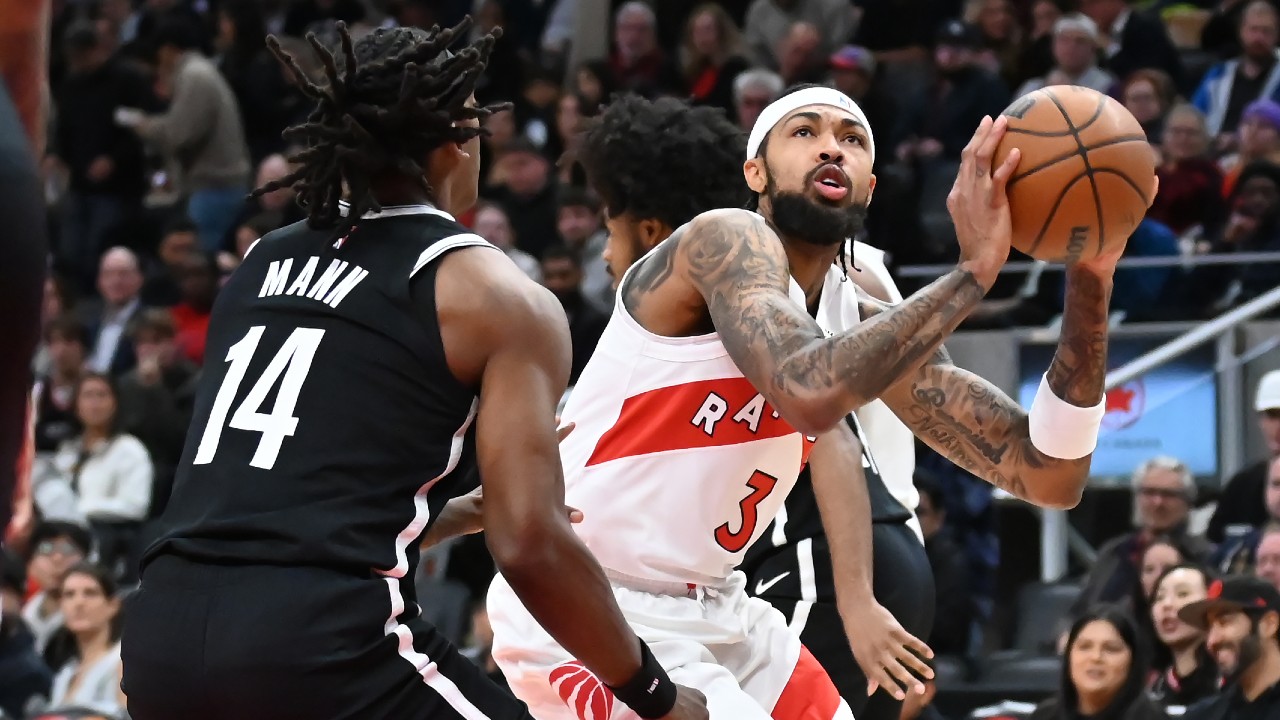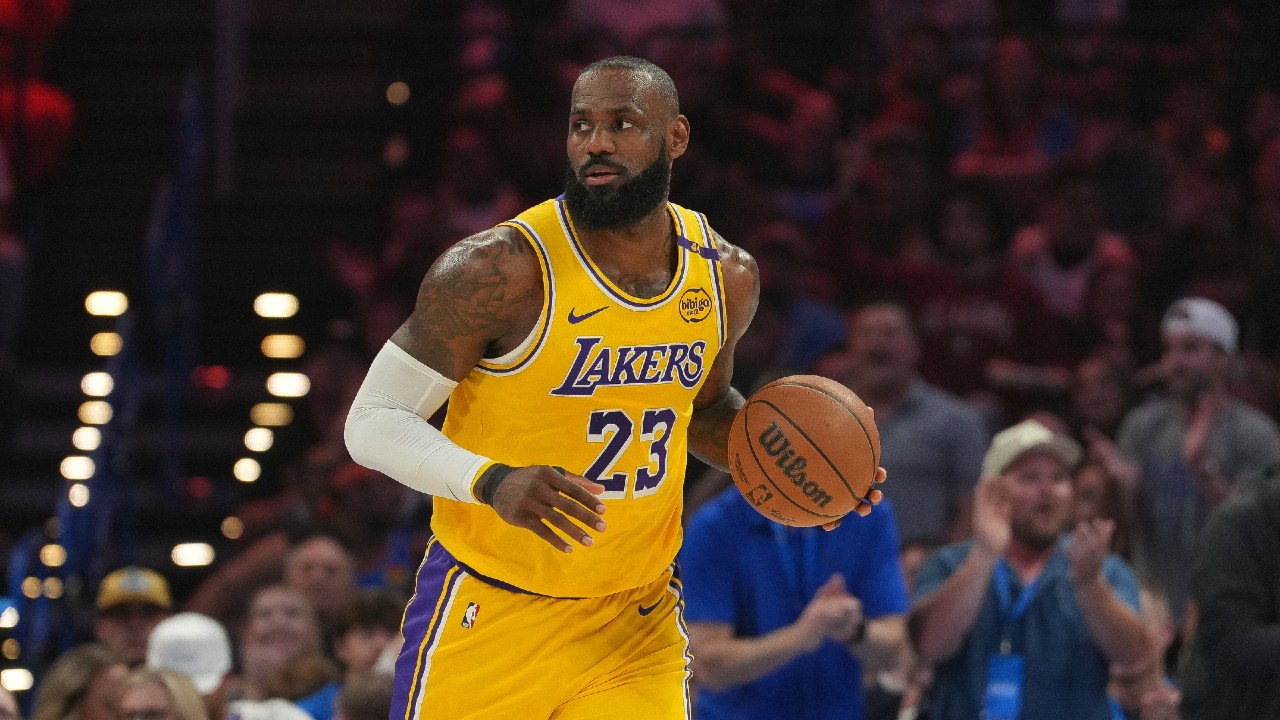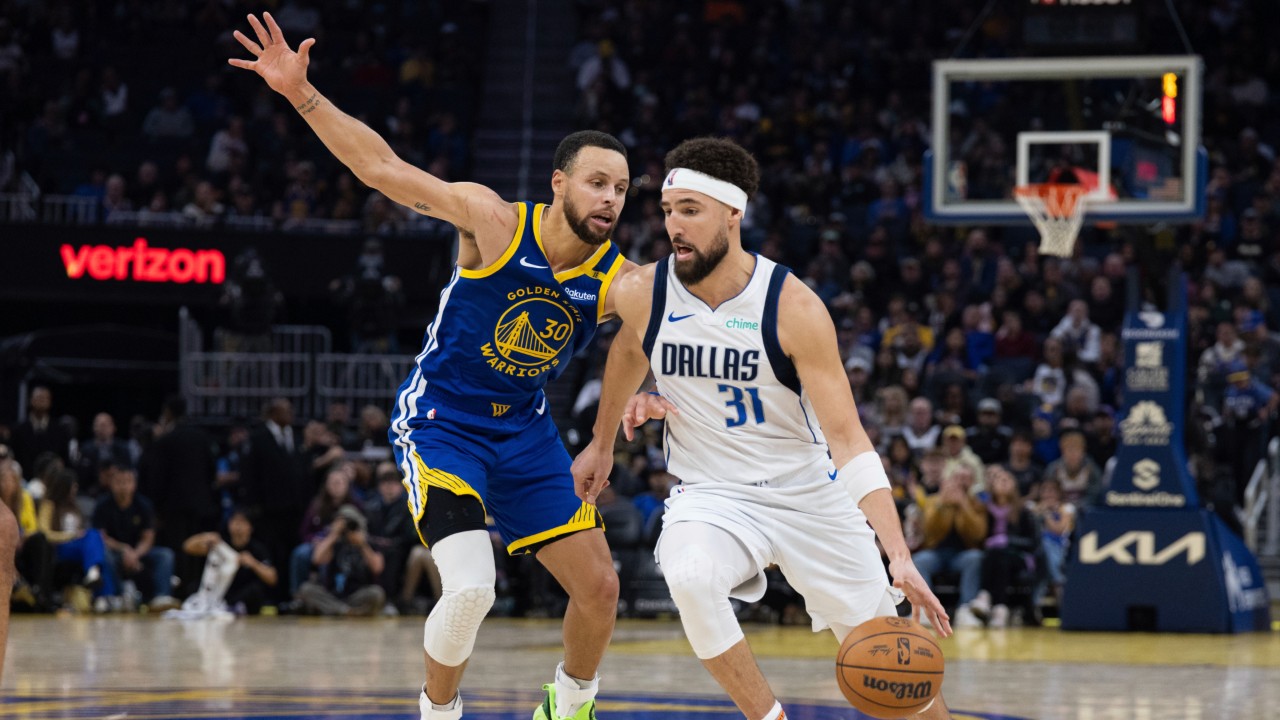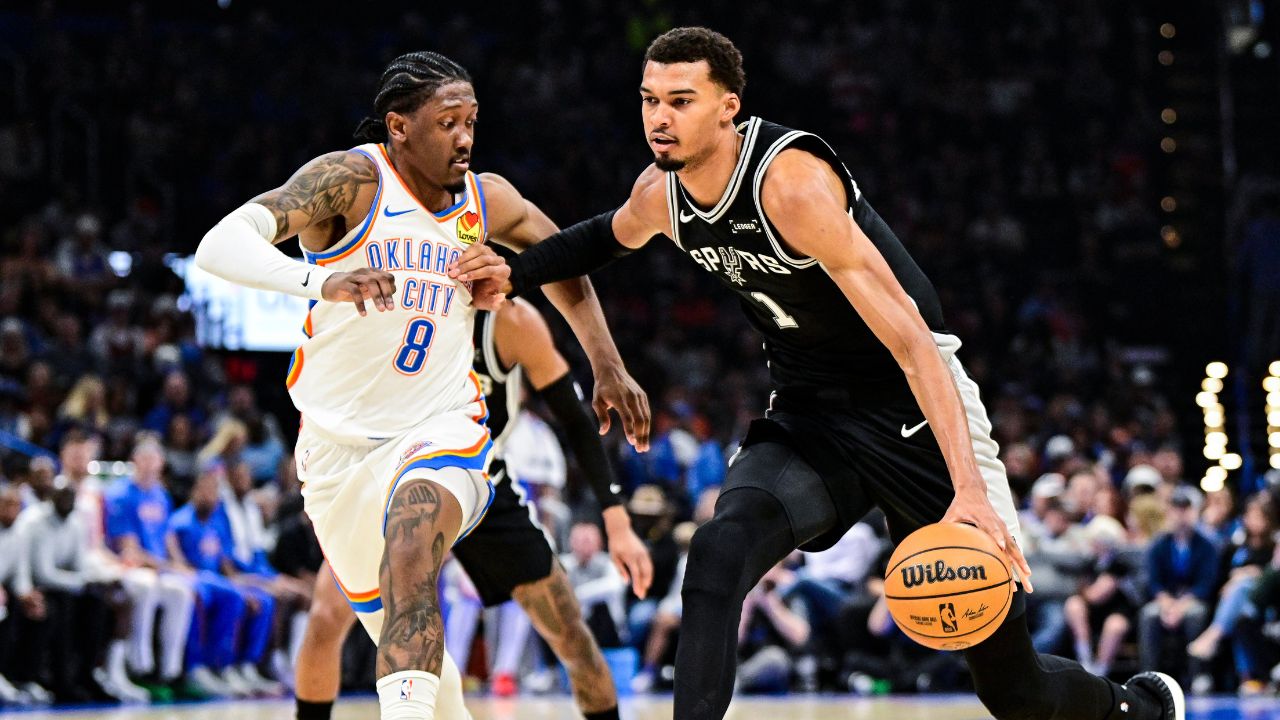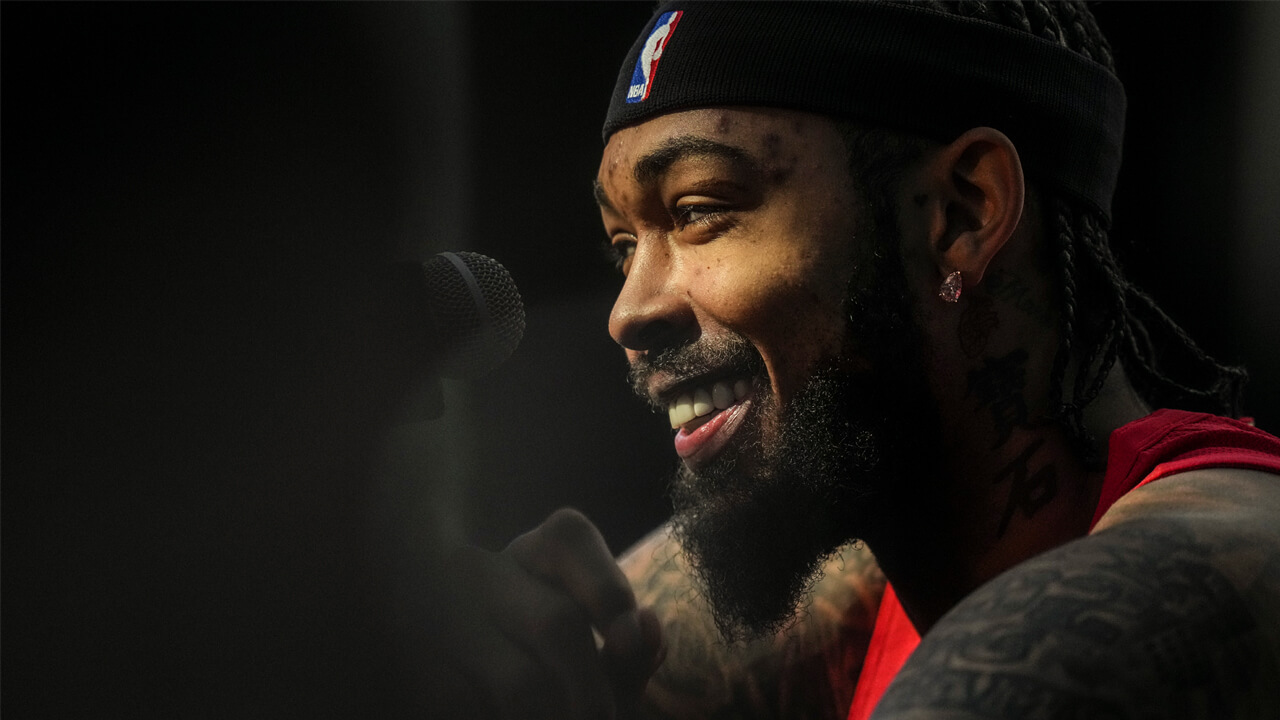
RETURN OF THE SILENT ASSASSIN
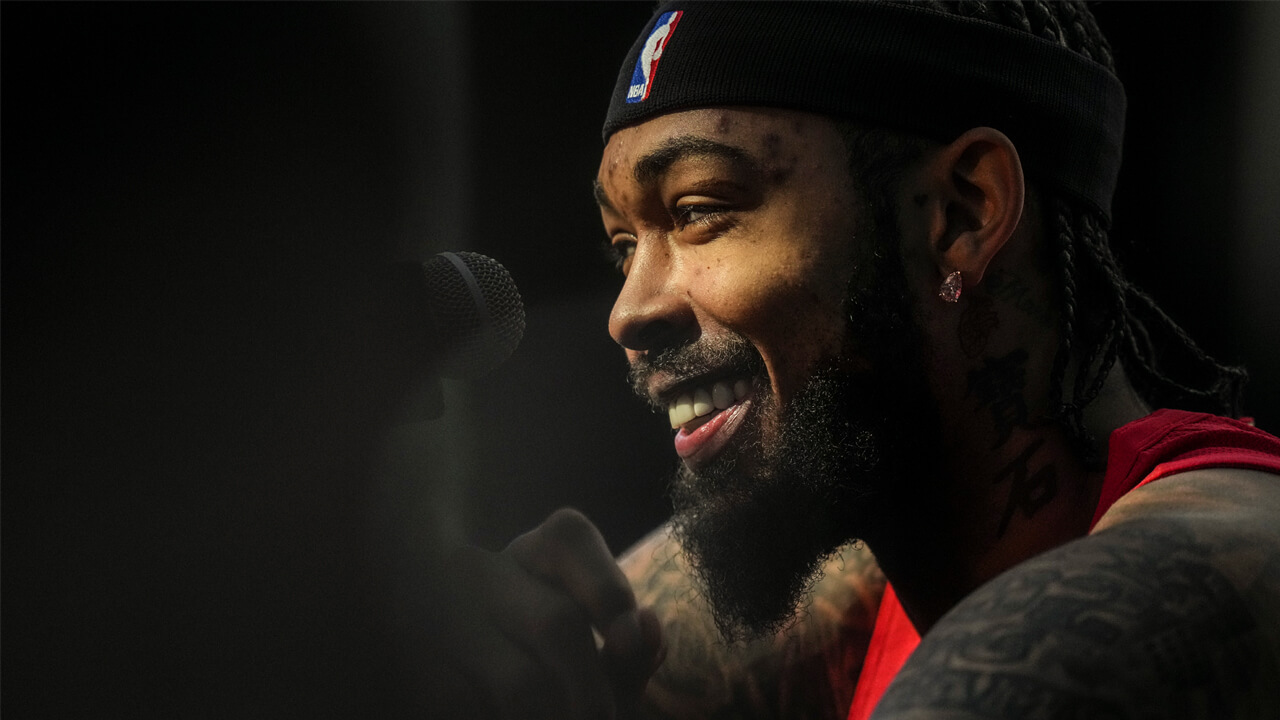
S
ometime around 4:30 p.m. on Wednesday, Oct. 22, Brandon Ingram’s heavy-lidded eyes will flutter open. He’ll roll out from under the Supima cotton sheets in his suite at the Four Seasons Hotel in downtown Atlanta and, refreshed from his nap, look forward to playing in a regular-season NBA game for the first time in 319 days. His day will have started with a light breakfast in the team room at the hotel, before a bus ride to State Farm Arena for the Raptors’ morning shootaround ahead of their season-opener against the Atlanta Hawks. He’ll get a massage, followed by lunch. He’s been eating the same game-day meal since he was drafted No. 2-overall out of Duke University in 2016 by the Los Angeles Lakers: chicken, rice and asparagus. Meal done, it’s time to hit those soft, shiny cotton sheets.
Everything about Ingram’s demeanour murmurs ‘chill’. From his long, slow strides, loping with the ball up the floor, to his preferred whisper-quiet speaking volume, to the slow, slower, slowest pace he uses to lull defenders before he makes a move as subtle, quick and deadly as a snake bite, Ingram is not someone who comes across as anxious. But pre-game nerves are still a thing for him, so much so that sleep the night before a big game still comes and goes. “I’ll probably be up all night,” he said as he looked ahead to his long-awaited Raptors debut. “I’m not as bad as I used to be. I used to be really, really anxious to get on the floor. I’m a little more calm now, but I’m sure I won’t get much sleep [the night]before the Atlanta game.”
Since Ingram last played an NBA game, he’s fallen out of the NBA discourse. He was an all-star in 2020 and led the New Orleans Pelicans to the playoffs in 2021, but he has been largely an afterthought recently as injuries and poor team performances have chipped away at his ‘rising star’ status. A preseason ranking of the NBA’s top 100 players by ESPN listed him 77th, a fall of 37 spots from the year before, and down from 26th in 2021 — an alarming trend across a player’s age 23 to 28 seasons. On top of that, a lot has happened since he went down with a severe ankle sprain in the first quarter of his last game with the Pelicans, back on Dec. 7th, 2024. There was the trade, just minutes before the deadline on Feb. 6, and the long recovery from injury that meant he never took the floor for the Raptors last season. Still, Toronto singed Ingram to a three-year extension for $120 million, a deal that raised some eyebrows around the NBA given that, for all his talent, Ingram is best known for missing games and being on teams that haven’t done much winning — facts that might be related.
But neither the doubters nor his injury history stopped Ingram, shortly after being cleared for full contact in July, from declaring with confidence that “we’re making the playoffs for sure.” And though nine months between regular-season games is an eternity in the NBA, Ingram has shown no signs of rust or uncertainty, averaging 24 points per 36 minutes in four pre-season appearances, numbers right in line with his career production. “He’s a silent assassin,” is the scouting report from Ochai Agbaji, who guarded Ingram regularly when they were both in the Western Conference and has been his primary opponent during practice with the Raptors. “Because he can make the tough shots, even with the hand up, even with pressurized, physical defence. He has the length, he has the size … he’s one of those archetype kind of players that a lot of guys try to emulate, but can’t be, literally.”
Practice and preseason are all well and good, but Wednesday night is the real thing, a return that comes against a restructured Hawks team that some have pegged as a dark-horse contender for the Eastern Conference Finals. So yeah, even if he exudes calm on the surface, there might be some paddling going on underneath. Which is where Ingram’s sack time comes into play. For whatever reason, he has no problem snoozing on game day. “I’m talking four hours,” he says. “I don’t know if you can call that a nap. It’s more like a sleep.” His 240 minutes of shut eye over, Ingram will shake off the cobwebs and get ready to go to work, where he plans to remind anyone who has been sleeping on him what they’ve been missing.
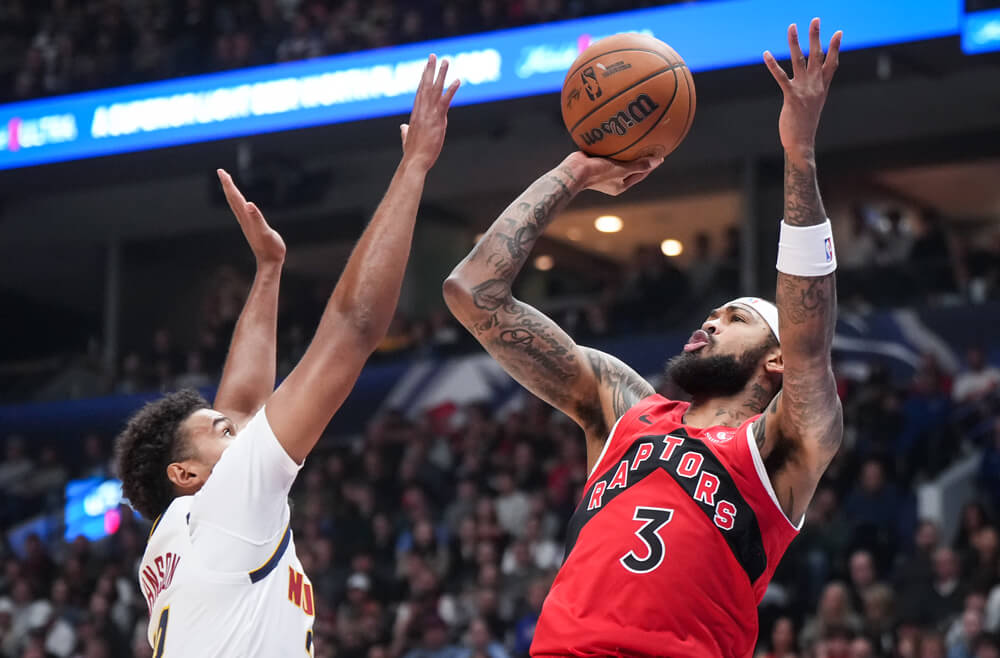
T
o find the last time the world at large was this unaware of what Brandon Ingram was ready to bring to the basketball court, you’d probably have to go all the way back to the summer before he entered 10th grade in Kinston, North Carolina. At the time, Ingram was well-known locally and pegged as the next big thing from the small, semi-rural town of 21,000 about four hours east of Charlotte. In basketball circles, Kinston is a brand, standing for toughness, resilience and passion for the game. It’s the best explanation for why the speck in the middle of nowhere has somehow produced six NBA players: former Celtic Cedric Maxwell, Charles Shackleford, Mitchell Wiggins (father of Andrew), Jerry Stackhouse, Reggie Bullock and Ingram. Dubbed ‘Basketball Heaven’, Kinston was built on tobacco and textile production and — in sports terms at least — has benefitted from the plethora of gyms and parks that were built during better times, before those industries shrunk or moved overseas, leaving elevated rates of unemployment, child poverty and violent crime in their wake.
Ingram’s father, Donald, a former police officer, ran one of Kinston’s 10 rec centres, giving his son unlimited gym-time to hone his skills. His older brother, Bo, was himself a standout on the court, meaning Ingram was never even the best player in his family growing up. And then there was the local tradition where up-and-coming talents were invited to play men’s league and open gym with the adults in a rough-and-tumble style that was not for the meek.
Through middle-school, in an era when elite, hand-picked AAU teams travelled across the country in the name of finding competition, gaining exposure and getting ranked for recruiting purposes, Ingram was fine with staying close to home, working on his skills with his dad and balling out against the locals. If he was good in Kinston, he assumed his game would travel just fine. “I was so used to being home that I didn’t want to travel outside of North Carolina or be with anybody new,” he says. “My friends, when we played, we didn’t do anything but foul each other. Like, we played aggressive, played hard. So, I knew that if I played against them and I was playing against older guys and they’re all fouling me and I’m still scoring that I was gonna be fine regardless.”
But his dad didn’t want to take any chances, so he reached out to Stackhouse to get Ingram involved with the two-time all-star and 18-year NBA vet’s AAU program, which ran out of Atlanta. Ingram’s first tournament outside of North Carolina was in Richmond, Va., and the willowy unknown dominated. By the time he got home, he had recruiting letters from NCAA powerhouses Kansas and UCLA waiting for him, and the offers kept coming. “After that, I said, ‘Okay, every chance that I get [to travel], I’m going every time,” Ingram says, sitting just off the practice floor during the Raptors training camp at the University of Calgary. “And so I started going against different talent out of state. I started going to Florida. I started going to Texas. And the [national]talent that I was kind of scared of, they weren’t on my level, and the guys that was on my level, I didn’t think they worked as hard or loved the game as much as me. And I think from my sophomore year, I was No. 60 in the country. And then when I started my senior year, I was two or three in the country.”
Ingram’s rise continued uninterrupted from there. In his lone season at Duke, playing for the legendary Mike Krzyzewski, Ingram was an honourable mention all-American as a freshman and led all ACC freshman in scoring in the regular season. He then averaged 23 points, 6.7 rebounds and 2.7 assists in the NCAA tournament before Duke was eliminated in the Sweet 16. That he would declare for the 2016 NBA Draft was an almost-foregone conclusion — 6-foot-8 18-year-olds with 7-foot-3 wingspans and elite ball skills who dominate at the college level tend to get drafted — the only question was how high Ingram would be taken. Second overall, it turned out, behind Ben Simmons and just ahead of Celtics star Jaylen Brown.
At a Team USA camp that summer, Ingram matched up with Kevin Durant, the player he has most often been compared to for their thin frames and elite offensive games. Durant was suitably impressed. “He reminds me of myself,” Durant said at the time. “I’m a huge fan. First person I can say that I can look at him and feel like I’m looking in the mirror. … He could put the ball on the floor, change directions, get to the rim, shoot the pull-up three. So that stuff started to come a little later on for me, but he’s a little further along than I was.”
Ingram hit his stride in his third NBA season, averaging 18.3 points, 5.1 rebounds and 3.0 assists as a 21-year-old playing alongside another living legend, LeBron James. But the Lakers and James were impatient to win a championship and chose to use Ingram as the centrepiece in the 2019 trade that delivered Anthony Davis to Los Angeles and sent Ingram to one of the NBA’s smaller markets in New Orleans. Even though Davis helped James to the 2020 NBA title, it looked like the Pelicans had acquitted themselves well in the transaction, with Ingram bumping his averages to 23.8 points, 6.1 rebounds and 4.2 assists in 2019-20, earning all-star honours and winning the NBA’s Most Improved Player award . At 22, it seemed like things were about to really take off for Ingram and the Pelicans. Not quite.
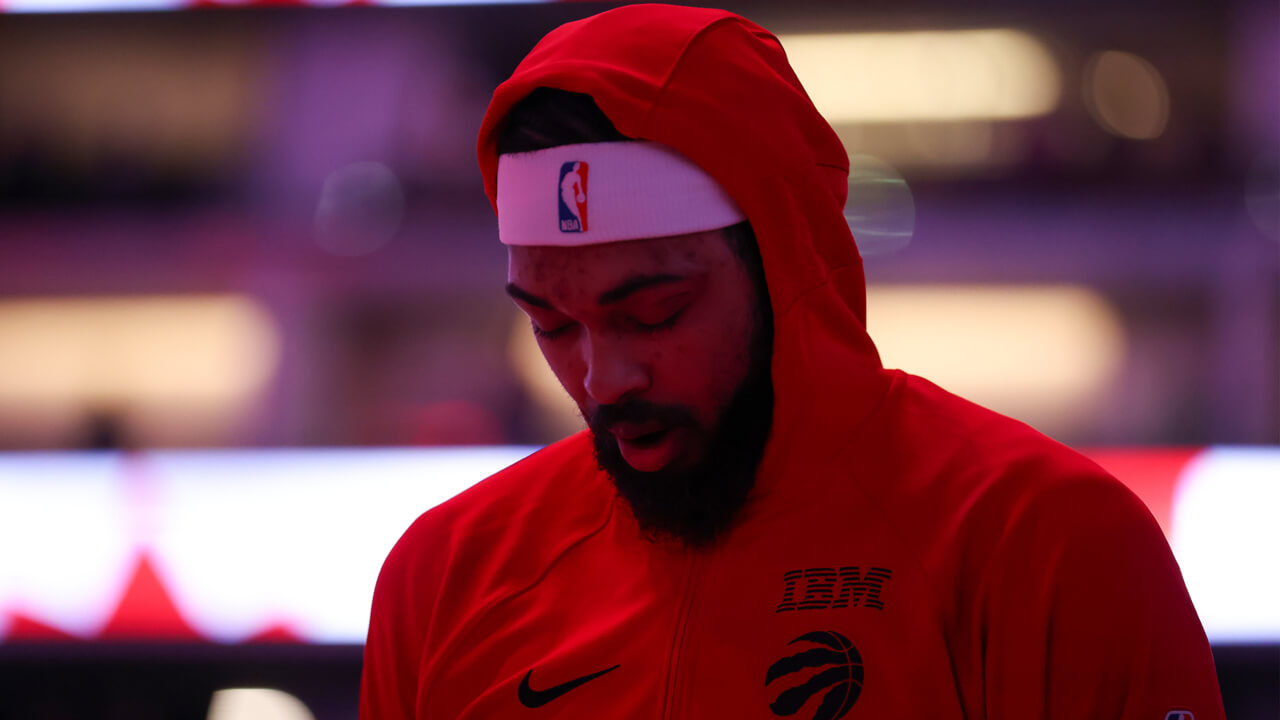
S
o much of individual and team success in the NBA comes down to luck, and the simplest explanation for how the Pelicans went from one of the most exciting and promising young rosters in the NBA to unravelling before reaching their potential comes down to just that. Over their six seasons together in New Orleans, Ingram and oft-injured superstar running mate Zion Williamson, played just 154 games together, 31.3 per cent of the total possible over that span. “It was tough man, it was kind of demoralizing,” says Raptors veteran Garrett Temple, who played three seasons in New Orleans with Ingram. “You knew the talent we had. The team was built so that certain players could play with certain players, that’s what a good front office does, and when the main guys are the ones getting injured — and freak injuries, you know — it hurts, it’s tough.”
In the only season Ingram and Williamson played more 50 games together after Zion’s rookie year, New Orleans won 49 games and looked like a team to be reckoned with. But Williamson got hurt in the play-in tournament and the Pelicans were swept in the first round by the Oklahoma City Thunder, a series in which Ingram, who rushed back from a knee injury, withered under a steady dose of Thunder star Lu Dort’s defensive hellscape. “I was probably only at about 60 per cent for that series,” Ingram says. “That’s something I probably wouldn’t do again.”
For Ingram and the Pelicans, it was the beginning of the end. The club — already bound to a long-term deal with one unreliable star in Williamson, and with several other commitments on their small-market books — wasn’t in a rush to extend him for the full max, and Ingram wasn’t interested in settling. A trade was the next logical step, but with the NBA entering its hard cap era, where the financial and team-building penalties for franchises that overspend become more prohibitive, finding a team motivated to take on Ingram proved difficult. It was telling that when the Raptors pulled the trigger at the trade deadline last February, the outgoing compensation was a pair of rotation-level veterans (Bruce Brown and Kelly Olynyk) on contracts that were either expiring or about to and what will likely be a middling first-round pick in the 2026 draft (it’s Indiana’s and top-four protected) as well as the Raptors’ 2031 second-round pick. It wasn’t exactly a salary dump by the Pelicans, but it was in the neighbourhood. Heck, when Ingram signed his extension with the Raptors a few months later, even Rich Paul, his agent, indicated he was fortunate to get the deal he did. “I felt like had he got to the open market there was not much opportunity there,” Paul said in a radio interview this past summer. “So, he’s making $40 million per year over the next three years. That probably wouldn’t have been there for him had we got to quote-unquote ‘free agency.’”
The whole situation leaves Ingram in territory that seemed unlikely at most other stages of his career: when he was the centrepiece of the Anthony Davis trade, or a 22-year-old all-star in his fourth season, or when he averaged 27 points, 6.2 rebounds and 6.2 assists on 58.4 per cent True Shooting at age 24 as the Pelicans pushed the 64-win Phoenix Suns to six games in the first round. “That was amazing man,” says Temple of Ingram’s performance in the Phoenix series and its lead-up, when he put the team on his back for two play-in games with Williamson sidelined. “It was great. He was cooking man. And that’s the thing, the ability is there. He can do things.”
Undoubtedly. The question is, will he? And for how long before another injury keeps him out for an extended period?
Even though his ascent to the NBA’s elite has seen setbacks, Ingram remains resolutely confident in his own abilities. “When I’m right, there’s no one in the league that can stop me,” he says. “And I’ve seen it firsthand, I promise you I have. When I’m in rhythm and I have my explosive step, I can get to any spot on the floor and I can raise over anybody. My game is about rhythm, footwork and playing super-aggressive. When I’m playing super-aggressive, you got to bang on the refs to call a foul. I’m either going to get fouled or get to my spot.”
Ingram says the struggles he and the Pelicans went through and the team’s willingness to part ways with him required a career reassessment. He even went so far as to add a line from scripture “focus on me, not the storm” in cursive on his neck, part of a full-body tattoo portfolio that began as a teenager when a friend inked his chest in a barn on the outskirts of Kinston. Ingram felt the latest message fit as he faced new basketball headwinds. “I’ve always been a person that doesn’t bend to what’s outside of me, myself, my family and the people that I look up to. Those are the opinions that I value, the people who really know what’s going on,” he says. “But I was in some kind of like — I wouldn’t say it was depression, but I wasn’t feeling up to my standard for the last two or three years. I had a point where I had to start thinking about myself: ‘What can I change? What can I control?’”
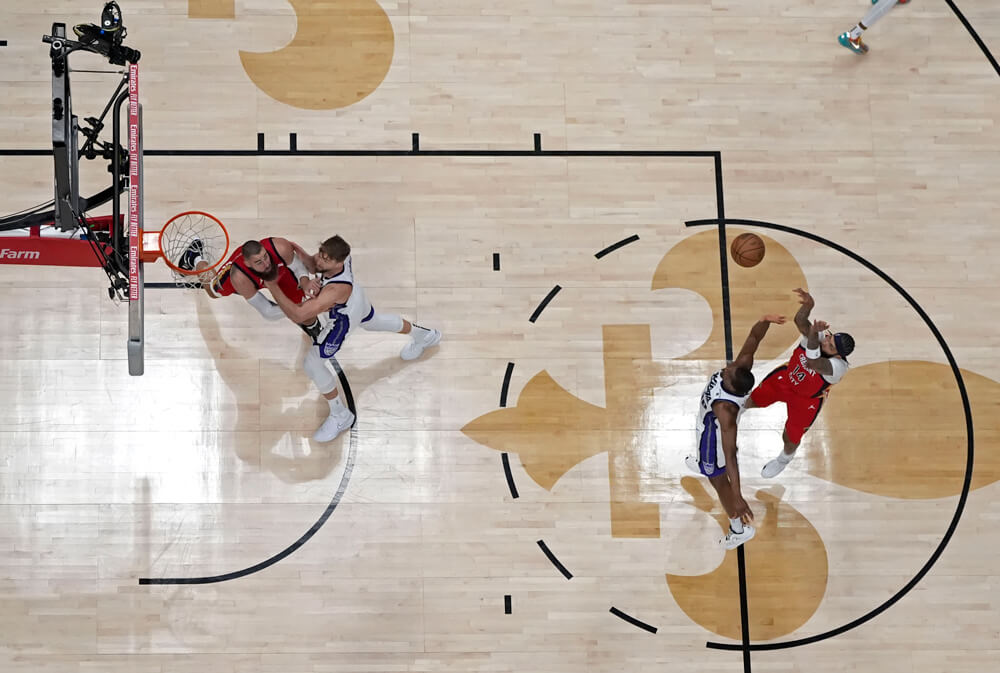
For Stackhouse, seeing the skinny middle-schooler he used to invite to run with the high-school kids back in Kinston reach this stage of his career is a welcome development, and one that will pay dividends. “Getting traded can be a wake-up call,” says Stackhouse, who learned the ins and outs of the Raptors organization as an assistant in 2015-16 and then for two years as head coach of Raptors 905, leading them to a D-League title in 2017. “The first time, you can kind of understand it. Getting traded for Anthony Davis … that’s kind of a feather in your cap. But now it’s not the case. You’re in not only a different city, but a different country because the organization [the Pelicans]who brought you there to do some great things — and he loved it there — decided to move on. That can weigh on you a little bit, especially when your body won’t allow you to do anything about it.
“And he kind of took a big step the last year or two, even with managing his career,” Stackhouse continues. “He’s taken more ownership of it. And so, I think you’re about to see a guy that’s determined and focused and knows what he wants. He’s starting to feel healthy again, like he can control his own destiny and he’s basically like, ‘I’m going to bet on me.’”
Says Ingram of starting fresh in Toronto: “It’s a chance right now to remind everybody, to show everything I got. I’m praying for a healthy season.”
The Raptors aren’t leaving it up the Basketball Gods or any other deity, though. Ingram represents a massive bet by the organization, an upside play on an elite talent who is still in the middle of what should be his prime, but who has fallen out of the conversation league-wide when it comes to being an organizational cornerstone. While Ingram was both acquired and signed while former president Masai Ujiri was still on the job, general manager Bobby Webster — the organization’s top-ranking basketball executive — very much had his fingerprints on the decision to add Ingram as a co-star on a team theoretically built around Scottie Barnes.
There are fit concerns, given that Ingram and Barnes are each accustomed to initiating the action on offence, and Barnes’s lack of three-point range creates spacing issues when he doesn’t have the ball. And in conversations with scouts from opposing teams, questions about Ingram’s motor, grit and defensive acumen get raised. But all of that pales in comparison to the risk of committing $120 million to a player who can’t stay on the floor. If Ingram continues to trundle along playing 50-ish games a season — he’s averaged 52 since his career-high 79 as a rookie — not only will his career end up as one of the league’s great disappointments, he could bring down some others with him.
But the early returns are good. The commitment Ingram has shown to his overall conditioning since joining the Raptors has been more than encouraging. “I’ve been around a lot of athletes,” says one member of the team’s front office. “And you can tell when a guy is focussed. And this guy is really f—ing focussed.”
From Ingram’s point of view, his mid-career malaise prompted an examination of everything from his training strategies to his diet to his sleeping habits. “I think most of my injuries have come from overworking,” he says. “I don’t know how to stay out of the gym. Every day, I want to do a two-a-day. So, it’s about knowing when to rest, when to be out on the floor, when to go hard, when certain days are mental days. It’s all about that … I’m just trying to do everything I can do that’s in my control.”
The Raptors ace in this regard might end up being Alex McKechnie, the team’s vice-president of player health and performance and the healer who helped Kawhi Leonard — another injury-prone star acquired at a discount — lead all players in post-season minutes during the Raptors’ 2019 championship run. “One of the biggest things I was happy about him going to Toronto was the fact that he was getting with Alex,” says Stackhouse, who before joining McKechnie on the Raptors staff, worked with him in the off-seasons during his own playing career. “I knew [McKechnie] was gonna get him right, and he wasn’t gonna release him until he was right, you know?”
Ingram began working directly with McKechnie from the moment he joined the Raptors, and nine months in, is sold on the process. “The biggest thing is the communication,” Ingram says. “It’s overcommunication, if anything. ‘How are you feeling? We noticed this when you were on the floor, is there something wrong?’ Or ‘we’re going to work in this type of thing in the weight room.’ It’s things like that that makes things easier. You can hit them with anything, they understand it. And maybe they’re — well, not maybe, I’ve seen them be overly cautious, not only with me, but with the whole group. They’re always like, ‘You might be ready, but we’re going to take an extra few days and make sure you’re ready here.’ They do a lot of analytics, a lot of different things, they know what’s going on with your body.”
It’s a familiar refrain to Stackhouse, and should be a soothing sound for Ingram, the Raptors and their fans. Especially because, as Stackhouse notes, “When [Ingram’s] body’s been good, he’s been good.”
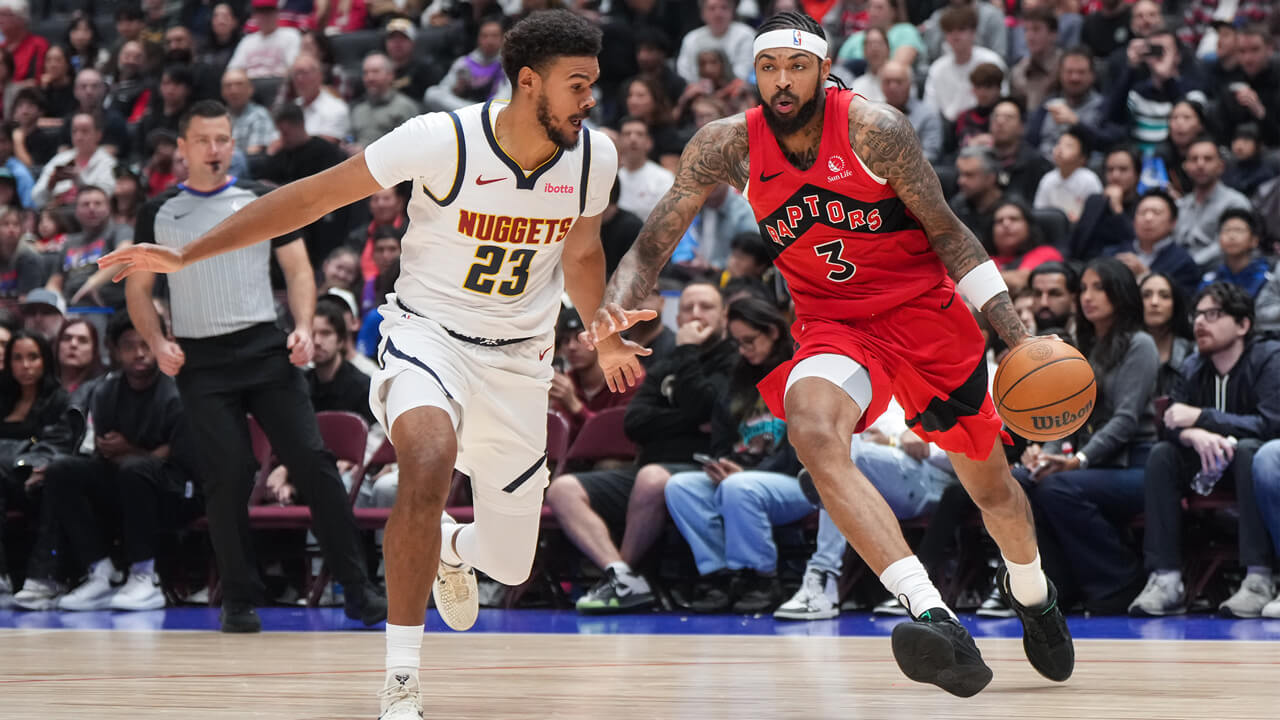
T
he Resort at Pelican Hill is the kind of place people usually visit to get away from work, but things are done differently in the NBA. The 500-acre parcel of land on the southern California coast, just south of Los Angeles and adjacent to the exclusive enclave of Newport Beach, is home to two championship golf courses, five restaurants and a circular infinity pool overlooking the Pacific Ocean. Rooms currently start at $1,245 per night. Ingram has lived in Newport Beach since he was a Laker and in mid-August, he hosted a group of the Raptors’ younger players and their partners for a work trip: group workouts in the morning followed by activities and meals in the afternoons and evenings, all expenses covered by their new veteran teammate.
“He thought of everything,” says second-year guard Jamal Shead. “He even had recovery shakes for us.” By the summer, Ingram’s teammates were already familiar with his willingness to go the extra mile. Last April, when the University of Houston, Shead’s college team, made the NCAA Finals, Ingram paid for a private jet so the then-rookie guard could make it back from San Antonio in time for practice. “He’s just a really good dude,” says Shead.
In Newport Beach, the plan was for Raptors assistant Pat Delany to run the on-court portion of the program, but Ingram took the lead there too, introducing his young teammates to the routines that have made him one of the most skilled players in the sport. For Ingram, the motivation was twofold: having been so long removed from live reps as he recovered from his ankle sprain, he wanted to have NBA bodies on hand to get sharp in advance of the team’s open-gym sessions in Toronto in September. But it was also about both buying into and helping to shape a culture he hopes can help him and the Raptors achieve their mutual goals. “I wanted to get to know my teammates a little bit,” Ingram says. “I thought it was a perfect time. I didn’t get a chance to play with them in February and March. I just wanted to see them outside of the organization, just get a feel for ’em. Get on the court a little bit, get off the court and do some things. Just build a little bit of chemistry.
“That was the biggest thing for me,” he continues, “and show them that I was there for them, whether it was on the floor or off the floor. When you do things like that, it helps when it comes to talking in real-time on the court. You can tell them anything and they’ll respond to it in a manner that will help the team … from a communication standpoint, from the standpoint of, we really want to be something this year, I thought it would take us far.”
When the invitation went out — the plan came together when the Raptors held a mini-camp in Spain in early August — there was no hesitation among the younger set about taking Ingram up on it. And while Ingram has revealed himself to be more chatty than his whisper-quiet public persona might suggest — “Y’all really think he quiet, but we’re starting to see it now, he’s talking,” says Shead. “Like, he won’t shut up. He won’t shut up.” — and to have a disarming, even goofy quality not always part of the package for the NBA’s alpha set (hinted at by the large SpongeBob tattoo on his abdomen), the time in California was also firsthand proof that for all of his gifts, Ingram’s ability to dominate at the NBA level is no accident. “It’s just his approach, he’s always locked in,” says second-year wing Jamison Battle, reflecting on his Pelican Hill experience. “Our team is like that. We love having fun with each other, we love spending time together, but when it’s time to lock in, we’ll take care of business and we’ll lock in. And for him, I mean, you see it translating on the court. Obviously, he hasn’t been out here in a long time and then he goes out against Sacramento [in the Raptors’ second preseason game]and he has 18 in the first quarter. I mean, that’s not surprising. That’s just the work he’s put in this summer to get back to his level translating.”
It all points to why the Raptors were willing to take the risk and acquire Ingram. They respect and appreciate his talent, and the fact that what he does best — score tough buckets against a set defence with a good level of efficiency — is something that Toronto struggled with last season. That the skillset comes bundled with a personality that wants to fit in with their budding culture, rather than lord over it, is a definite plus — Ingram is the rare NBA bucket-getter who is open to constructive criticism, loves diving into film and generally just enjoys being in the mix. A hooper’s hooper, as Bobby Webster described him.
But for all his gifts, Ingram is still a 28-year-old question mark. “He definitely has something to prove,” says Temple. “I think he wants to show people he can be a winner. He can be a winner on a team that wins, that has some success, and he wants to prove that he can play for a long time and is reliable … [but]he understands who he is, and I think some people forget what he can do.
“He’s ready to show people again.”
Ingram doesn’t entirely subscribe to the ‘prove ’em wrong’ approach, saying that setting out to find your own peace by trying to change what others think can be a fool’s errand. Instead, he says, he wants to prove himself right, that the ascending star from just a few years ago remains, having just turned 28, a force to be reckoned with.
Call it a reawakening, but Ingram expects to open some eyes, beginning in Atlanta and throughout what he and the Raptors hope will be a long, healthy season. “I know my own vision for where I want to be and that’s at the top of the league,” he says. “I keep that in my mind. You work for it and you wait for it to show up. Eventually things are going to take a turn, and it’s going to be the most beautiful thing ever.”
Chris Young/CP; Darryl Dyck/CP; Scott Marshall/AP; Gerald Herbert/AP; Darryl Dyck/CP.


